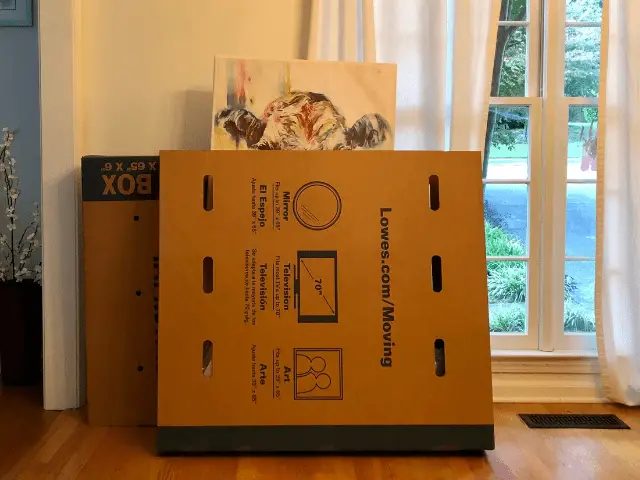Paintings are delicate and should be transported with much care. When you decide that it is time to move, one of the things you should put the most time into when packing is your paintings!
As an artist myself, my paintings are extremely valuable to me. To be honest, I would say they are priceless. Even if the artwork is not done by you, but rather by another artist, paintings are often one of a kind pieces of art that need to be handled with a lot of thought and planning.
If you need the best advice for packing your valuable hand painted masterpieces, then you are in luck! I am going to explain how to pack your paintings step by step to ensure that they travel sag to your new destination.
This article contains affiliate links. If you make a purchase through one I may earn a commission.
Things Needed To Pack Your Paintings
When it is time to pack up your artwork and transport it to your new home, you will want to do it correctly with the proper packing tools. Here is a list of things you will need to pack one or more paintings.
- Acid-Free Packing Paper
- Painters Tape
- Cardboard or Styrofoam
- Plastic or Bubble Wrap
- Packing Peanuts
- Boxes That Fit Your Individual Painting
- Permanent Marker
How To Pack Paintings For Moving

Once you have the above packing tools, you are ready to begin packing your paintings. The first thing you want to do is label each box with the name of the painting or a general description of the artwork. Also, add the word “fragile” or “move with care” to the outside in big and bold letters. You want whoever is moving your paintings to know they need to be handled gently.
Labeling the boxes first is recommended. Doing it this way is so you don’t have to try to write on the box with the delicate painting already inside. Especially if they are covered with glass. The pressure could cause the glass the crack or it could cause damage to the painting.
Your next step will be to apply a large piece of acid-free packing paper to the face of the painting. Use painter’s tape to secure the paper to the back of the painting. Painters tape is gentle, which will make it easier to remove.
to the face of the painting. Use painter’s tape to secure the paper to the back of the painting. Painters tape is gentle, which will make it easier to remove.
Make sure the packing paper wraps around all corners and sides to protect the full face of the painting. You can also wrap the entire painting if paper if you want added coverage. Be sure to use acid-free packing paper. Don’t use any type of paper that has writing or ink, this could transfer to the painting!
Once the face of the painting is covered, you want to use cardboard or Styrofoam to protect the corners of your painting. You can cut a strip of cardboard and wrap the corners, or cut Styrofoam to fit them. Either method will work to add protection to your painting and keep it secure.
Next, you will wrap the painting in plastic. You can use plain trash bags, bubble wrap, or plastic wrap. The plastic will help protect your painting from moisture. You never know when a thunderstorm, downpour, or even a busted water pipe may occur! Plastic wrap is a must!
After those steps, you will slide your painting into its assigned box. Be sure the box is as close in size to the painting as possible. You don’t want your painting sliding around too much. If needed, add packing peanuts to the box to keep it snug and secure.
Once your first painting is secure, you can pack the rest of them! Always remember to pack them separately to keep them from damaging each other.
Why Should You Pack Your Paintings Separately

Some people will toss their paintings all together into a box and ship them stacked together. But, I do not recommend this type of packing for your paintings.
Paintings are extremely delicate, especially oil paintings and acrylics. If you stack your paintings on top of each other and pack them into a single box, they will likely rub together. This could damage the canvas or the paint of your art piece.
and acrylics. If you stack your paintings on top of each other and pack them into a single box, they will likely rub together. This could damage the canvas or the paint of your art piece.
When packing your paintings you should always pack them separately. The separation protects each canvas and the paint that has been applied to them. It also helps prevent dents, scratches, or nicks on the painting.
Add Insurance For Your Artwork
As much time and effort as you put into packing should mean that your artwork will arrive safely at your new destination. But, unfortunately, life is full of unexpected events, and sometimes blunders and mistakes can occur.
Artwork can be worth a lot of money. If you are hiring movers to assist you with your relocation, it would be wise to add extra insurance. Just in case something were to happen with such precious cargo, you are protected.
Final Thoughts
Packing is something that you should take your time doing. Never rush the process just to get it done faster. You work hard for your items, and if you want them to retain their value, you must value your items. Pack your paintings with the advice given above to ensure that they will arrive at your new home in the same condition as they left.

